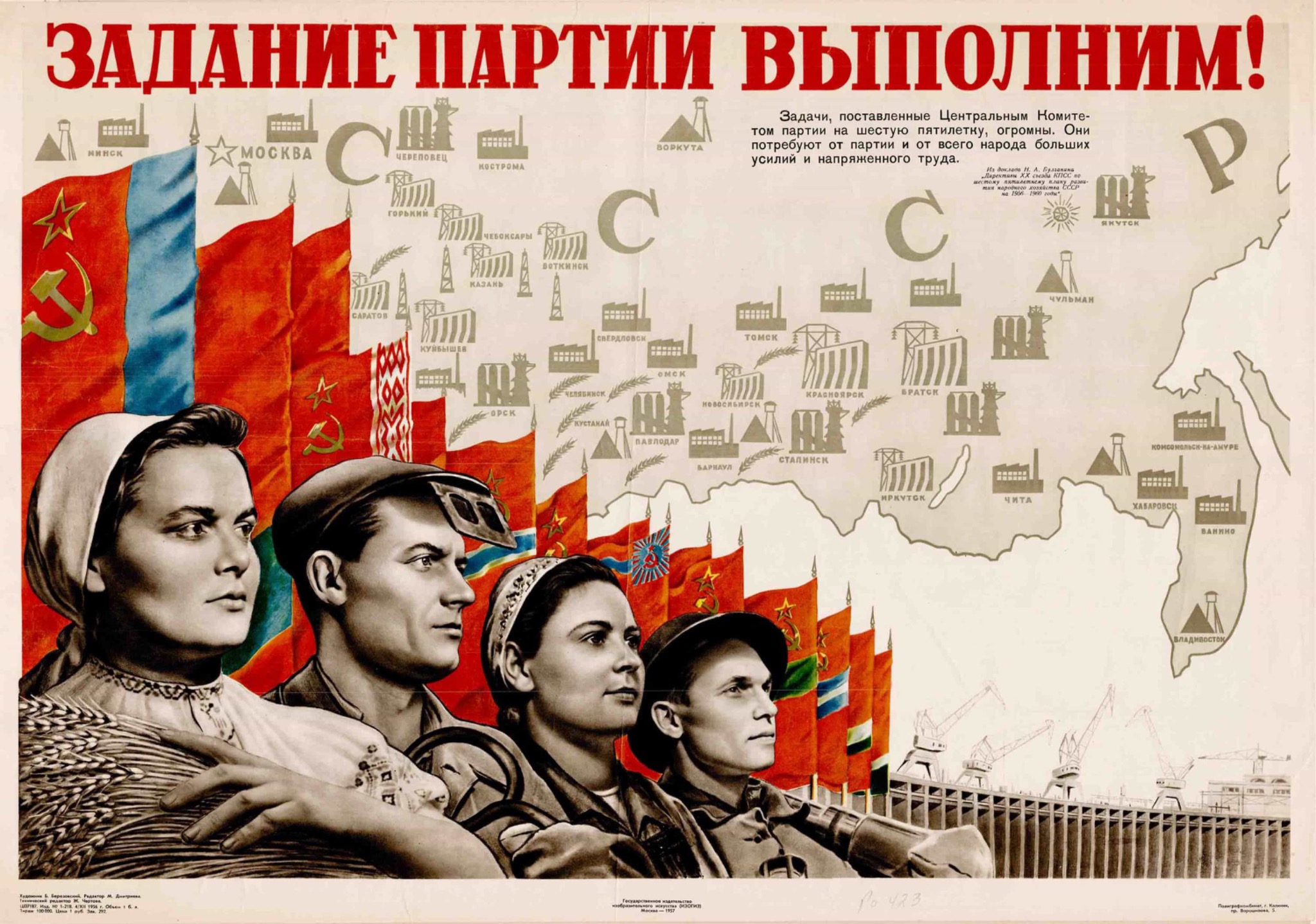
Propaganda, Power, and the Soviet Mind: The Role of Soviet Posters and Media in Shaping Ideology and War
Propaganda was a tool employed by the Soviet Union to spread communist ideology, advance the objectives of the Communist Party, and advance their own worldview. The recounting of history, the present, and the future was necessary for the Russian Empire's transition into a socialist country following the Russian Revolution in 1918. The rise and collapse of the Soviet Union are intimately tied to the history of Soviet propaganda posters. Propaganda posters depict the officially sanctioned history as it was experienced by its population in stark simplicity and vivid colors. In the Soviet Union, propaganda was widely used and considered a normal part of daily life. Soviet propaganda posters were created to portray a certain feeling, such as heroism, pride, or anxiety, depending on their intended use. The Main argument of the article is that Soviet propaganda poisoned and corrupted the minds of the soviet people with a false ideology that was advertised to be true. The recounting of primary sources such as films, posters, newspapers and the radio shed light on the power of corruption in the Soviet Union during the second World war.
Most Soviet propaganda posters from the early 1920s portrayed Lenin and Stalin together. This was planned. Despite Lenin's recommendation that Stalin be relieved of his duties as the Communist Party's secretary general. Stalin finally surpassed Lenin after his death, taking on the embodiment of the revolution. Soviet pop culture, the press, and television all prominently featured Stalin's cult personality. Stalin was portrayed by the Soviet media and artists as an all-knowing, all-powerful leader who was also the father of the Soviet people and a brilliant military tactician. Socialist Realism was the sole artistic style of the period, and there was little experimentation or variation. Posters of Lenin and Stalin were usually red, highly idealized and devoid of complex artistic meaning or interpretation.
During the Second World War, German Prisoners of War would be brought on the radio to assure their relatives back in Germany they were alive. The Soviet state would broadcast Communist propaganda between broadcasts. The government would corrupt radio frequencies to prevent its citizens from listening to political broadcasts from the BBC, Voice of America and other western programs. The Molotov-Ribbentrop Pact, a non-aggression pact between the two superpowers (Soviet Union and Germany), was signed by Stalin and Hitler in August 1939. When Hilter violated the agreement by invading the USSR in June 1941, less than two years later, artists contributed to the war effort in many ways. Millions of propaganda posters were manufactured by the state-run Telegraphic Agency of the Soviet Union's (TASS) which commissioned thousands of artwork designs. The posters were designed to instill a sense of patriotism among Soviet citizens. The posters are loaded with vile caricatures of the German invaders and heroic portrayals of Soviet Union soldiers and supporters of the Soviet leadership, making it powerful in both the message and image.
Agtiki (Soviet propaganda films) were shown in newly constructed theaters and broadcasted on the sides of propaganda trains as cinema became more popular. Newsreels were shown in subway stations during the Great Patriotic War to ensure that even the underprivileged were not immune to the influence and reach of propaganda. Everywhere there was censorship, and everything that did not follow the official narrative was either reshot, modified, or shelved. Ivan the Terrible Part 2, a historical drama by Sergei Mikhailovich Eisenstein, was shot in the middle of the 1940s but wasn't made public until more than ten years after Stalin's demise due to the films anti socialist nature.
One of Stalin's major concerns was the industrialization of the Soviet economy. Economic independence from capitalist nations would be a feature of an industrial Soviet Union. However, the employees of the new period faced a serious hazard from machinery, electricity, hot iron, and sharp equipment. Workplace accidents were frequent as a result of relaxed safety rules and a huge populace lacking in literacy. The government paid artists to produce striking, frequently violent safety posters for the walls of factories. The posters were created with the intention of interacting with an often illiterate populace, and a common feature among them was bright colors and stunning drawings. Workers were cautioned by safety signs to wear eye protection, stay away from live wires, and keep their fingers away from cutting edges through the use of propaganda posters.
Works Cited
comrade_kiev. “The Definitive History of the Soviet Propaganda Poster.” Comrade Kyiv, https://comradekiev.com/blog/t... Nonaggression Pact.” Encyclopædia Britannica, Encyclopædia Britannica, Inc., https://www.britannica.com/event/German-Soviet-Nonaggression-Pact.
Epatko, Larisa. “These Soviet Propaganda Posters Once Evoked Heroism, Pride and Anxiety.” PBS, Public Broadcasting Service, 11 July 2017, https://www.pbs.org/newshour/world/these-soviet-propaganda-posters-meant-to-evoke-heroism-pride.
Post a comment